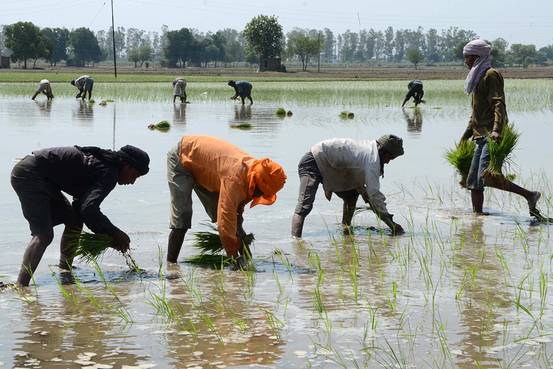
India’s monsoon rainfall has drenched the entire country, washing away concerns of a second successive drought and raising hopes for good summer crops.
But weather officials say it might be too early to declare it a normal monsoon year.
The southwest monsoon rainfall hit New Delhi on June 25 and advanced further into the remaining parts of western Rajasthan over the weekend, marking its arrival over the entire country more than two weeks ahead of the usual date of July 15, said B.P. Yadav, director of the India Meteorological Department, on Monday.
The start of the monsoon was delayed this year. It hit the southern coastline of Kerala on June 5, five days behind the official projected date. But it made “quick progress,” Mr. Yadav said, covering the entire country in around 21 days.
Since June 1, India has received 28% more rainfall than normal, according to the IMD.
India gets 75% of its annual rain in the June-through-September rainy season. The rains are a vital supply of water for most of the country’s farms. Agriculture still accounts for about 14% of India’s GDP and more than half of its employment.
But economists and weather experts say it is not just the geographical spread that matters. The monthly distribution of rainfall is also important.
“The performance of the southwest monsoon so far has been good and it is reflected in the increase in pulses and oilseeds acreage. But the crucial phase will be in July and August,” said Madan Sabnavis, chief economist at CARE ratings agency.
“In case the July rains are bad, it could have an impact on the final output,” he added.
D.S. Pai, head of IMD’s long-term forecasting division in the western city of Pune, said the rainfall in June is in surplus. But “it’s only for the month.”
He expects the monsoon to be “weaker” in July and August—the crucial months for agriculture.
Last year, monsoon rainfall covered the country two days behind the schedule, hitting farm output.
This year, the progress of monsoon rains in India’s northwestern breadbasket regions of Punjab, Haryana and Rajasthan allowed farmers to speed up planting of summer crops such as rice, corn, soybeans and cotton.
Between June 1 and June 26, summer crop acreage was 23.4% higher than in the same period last year, according to the latest data released by India’s agriculture ministry. Except for rice and sugar cane, of which planting declined 7% and 5% respectively due to deficient rains in the main growing regions in northern Uttar Pradesh state, the sowing of summer crops exceeded the levels during the same period last year.
Planting of oilseeds has risen fivefold to 2.8 million tons so far from a year earlier, and planting of pulses grew twofold to 1.1 million tons, thanks to excess rains in the western state of Gujarat and the central state of Madhya Pradesh, according to agriculture-ministry data.
Owing to good rainfall so far this year, the water levels in reservoirs across the country have “improved significantly,” said an official at the Central Water Commission, which monitors reservoirs that feed hydropower plants and irrigate fields.
Water storage across 91 reservoirs of the country stood at 43.23 billion cubic meters as of June 25, 11% higher than a year ago and 46% more than the benchmark 10-year average of 29.70 billion cubic meters, according to the Central Water Commission.
The rainfall so far could bring relief to policy makers who have been concerned about weaker agricultural growth and higher food inflation after the country’s weather department earlier this month lowered its monsoon rainfall forecast.
Most monsoon showers happen between July and August and are vital for the growth of crops. July rains account for nearly 33% of the four-month average, while August contributes 30% of the seasonal rains.